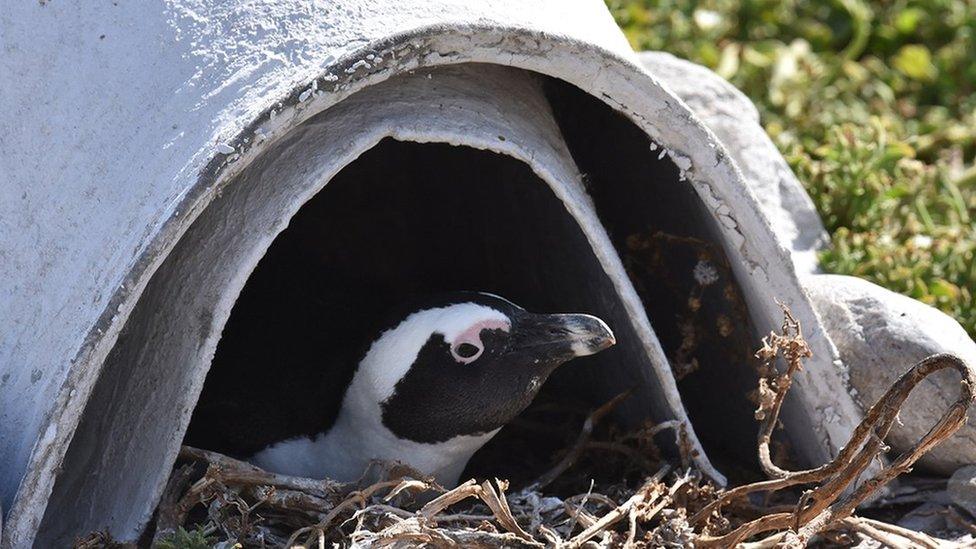How are penguin 'igloos' helping to protect them?
- Published
- comments

African penguins have lived in Southern Africa for a very long time, but their numbers have fallen drastically over the years.
There are now thought to be less than 20,000 breeding pairs of the penguins, down from an estimated four million birds in the 1800s.
Although the African penguin population has taken a huge hit, researchers and experts have come up with a unique way to support the endangered birds.
Before the 19th century, African penguins would lay their eggs in burrows made from their own poo! However, the faeces, which is also known as guano, began to be removed by traders and sold to be used as a fertiliser around the world.
This happened from the beginning of the 1800s all the way until the mid 1900s, and it meant the birds no longer had anywhere safe to lay their eggs.
Since then, many African penguins have been nesting in the open, however, this can be very dangerous for them.
African penguins are one of the smallest penguin species. Male penguins tend to be slightly larger compared to female penguins.
The artificial nests help to keep the penguins cool
The penguins are at risk of getting too hot, which can lead to heatstroke.
The birds' eggs are also exposed to overheating and predators, as the birds no longer have burrows to keep them in.
Now, a team of conservationists and researchers who are part of the African Penguin Nest Project have come up with a design for ceramic nests which are dotted around five penguin colonies including Bird Island, which is off the coast of South Africa. The island is home to nearly half of the world's remaining African penguins.
A special report from Bristol Zoo
The nests, which look like tiny igloos, help to keep the African penguins cool as they stay around one degree Celsius lower than a penguin's resting body temperature.
"If adults had to abandon nests for whatever reason, the eggs would never be at any risk of overheating," Shaun Welman, who is a zoologist at Nelson Mandela University (NMU), told Hakai magazine.
The introduction of the 'igloos' comes at a time when the effects of climate change mean the conditions the birds live in are at risk of becoming more and more dangerous.
As well as the changes to the environment they live in, their numbers are also under threat because of overfishing which impacts their food sources.
"Over the past 150 years the human race has done everything in our power to cause the extinction of African penguins. We've stolen their guano nesting material, poached millions of eggs, poached adult birds, over-harvested their food sources, polluted the ocean, and changed their delicate climate," said Kevin Graham who is a project coordinator for the African Penguin Nest Project.
"We caused the rapid decline of the population, but they're still here and they're struggling against extinction. We owe it to the penguins to help them in every way possible and to change our behaviour to give them a fighting chance for survival."
- Published5 November 2019
- Published12 February 2020
- Published7 December 2014
